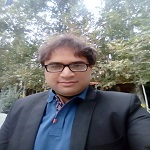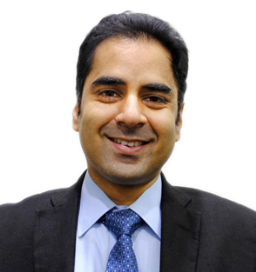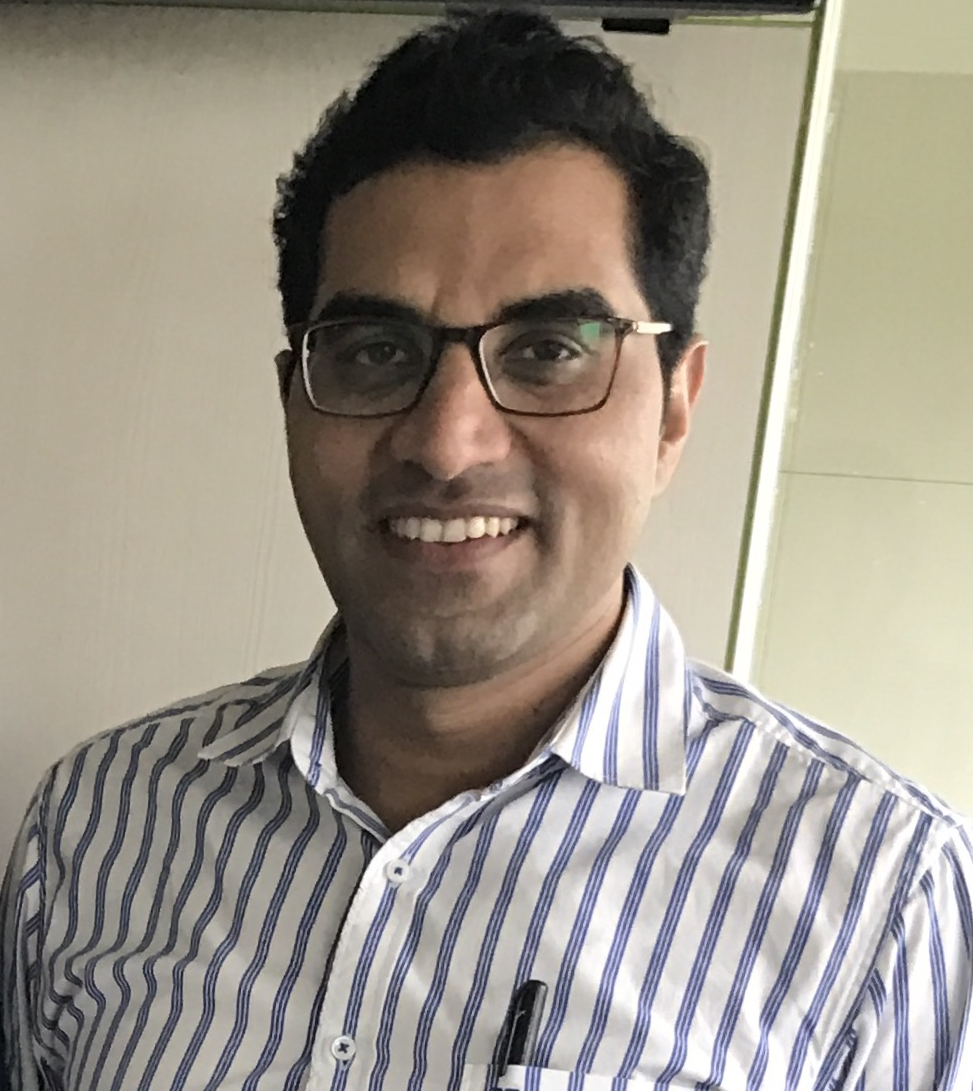Scientific Program
Keynote Session:
Title: Electronic water can reduce oxidative stress in cancer and diabetes patients for 3 weeks drinking
Biography:
Masahiro Onuma has expertise in oxidative disease prevention to use non-medical product based on GSK’s experience of Allopurinol which is the strongest anti-oxidant efficacy in this world. He creates new indication of Allopurinol for stomatitis induced by cancer treatment which was approved by the Japanese Cancer treatment committee to propose new mechanism of Allopurinol for anti-oxidant. And now, there are so many new research papers of Allopurinol in the world.  Â
Â
Abstract:
Oxidative stress means a state there is imbalance between the oxidizing action and the reducing action due to reactive oxygen species (ROS) in a living body, resulting in the oxidizing action becoming dominant. Oxidative stress arises as the balance between production and removal is disrupted through excessive production of ROS and impairment of the antioxidant system. Oxidative stress has been reported to be involved in the onset and progress of various diseases. Characteristics of Type 2 diabetes are insulin secretion failure and insulin resistance, but it seems that oxidative stress is greatly involved in insulin secretion failure. In the insulin secretion-inducing β cells of Langerhans islets in the pancreas, the amount of superoxide dismutase (SOD), which is representative of the ROS elimination system, is small and resistance to oxidative stress is considered to be weak. Regarding cancer, it is well known that chronic inflammatory conditions increase the risk of carcinogenesis. Cells such as neutrophils and macrophages are activated in the inflammation area leading to increase in production of active oxygen and nitric oxide. These free radicals cause DNA mutation and cell proliferation thereby promoting cancer development. When chronic inflammation is present, cancer develops more easily. Electronic water, which was developed to generate electron in water, was consumed for three weeks, after meals, between meals and before sleeping 6 times a day, and according to the test subjects' possible time periods. The amount of drinking water was 750-1000 mL, and BAP and d-ROMs checks for all cases were carried out at 4:30 pm. The results of cancer patients and diabetes patients were seen as attached. As a result, the d-ROMs value in the degree of oxidative stress has reduced, and the BAP value, which is an indicator of plasma antioxidant capacity, has improved significantly.
Â
Title: An improved bio fabrication process to enhance cell survival of cartilage regeneration and functionality of the osteoarthritic knee when enriched with bone marrow mesenchymal stem cells
Biography:
Jose Manuel Baena is a research associate in "Advanced therapies: differentiation, regeneration and cancer" at IBIMER, CIBM, Universidad de Granada. He is the Founder of BRECA Health Care, pioneer in 3D printed custom-made implants for orthopaedic surgery, and REGEMAT 3D, the first Spanish bioprinting company. He is an expert in innovation, business development and internationalization, lecturer in some business schools and he also is passionate about biomedicine and technology. In his free time, he is also serves as a researcher at the Biopathology and Regenerative Medicine Institute (IBIMER).
Abstract:
Tissue regeneration (TR) is currently one of the most challenging biotechnology unsolved problems. Tissue engineering (TE) is a multidisciplinary science that aims at solving the problems of TR. TE could solve pathologies and improve the quality of life of billions of people around the world suffering from tissue damages. New advances in stem cell (SC) research for the regeneration of tissue injuries have opened a new promising research field. However, research carried out nowadays with twodimensional (2D) cell cultures do not provide the expected results, as 2D cultures do not mimic the 3D structure of a living tissue. Some of the commonly used polymers for cartilage regeneration are Poly-lactic acid (PLA) and it’s derivate as Poly-L-lactic acid (PLLA), Poly (glycolic acids) (PGAs) and derivate as Poly (lactic-co-glycolicacids) (PLGAs) and Poly caprolactone (PCL). All these materials can be printed using fused deposition modelling (FDM), a process in which a heated nozzle melt a thermoplastic filament and deposit it in a surface, drawing the outline and the internal filling of every layer. All these procedures use melting temperatures that decrease viability and cell survival. Research groups around the world are focusing their efforts in finding low temperature printing thermoplastics or restricted geometries that avoid the contact of the thermoplastic and cells at a higher temperature than the physiologically viable. This has mainly 2 problems; new biomaterials need a long procedure of clearance before they can be used in clinical used, and restrictions in geometries will limit the clinical application of 3D printing in TE.
Â
Title: Malignant pathology of brain meningioma tumor as the best predictor for mortality and recurrence rate of meningioma
Biography:
I am Dr. Mojtaba Mafi M.D., Medical Doctor/ Physician, who graduated from Tehran University, School of Medicine with honor. I studied in the neurosurgery ward and graduated with A score with a thesis on Meningioma Brain Tumor for 6 years. With continuing my practice with special consideration on psychosomatic disorders, I completed many post-graduate courses on health psychology, addiction medicine, sexual disorders therapy successfully. I passed many post-graduate courses in Neuro, approved by Medical sciences university. As well, I have been passed postgraduate courses on Nutrition, I successfully passed more than 10 programs with certificates and membership in the Iranian. I had passed Beauty and Skincare courses in South Korea and certified from Sunghuwan co Ltd for using and working of beauty technology, RF and IPL.
Abstract:
We studied on meningioma among 614 patients with Brain tumor (consists of meningioma, glioma and pituitary tumor). 145 patients had meningioma. Our results are in various topics: clinical features of meningioma, anatomical distribution, radiation induced meningioma, meningioma and foster Kennedy syndrome, meningioma and pseudo foster kennedy syndrome, multiple meningioma, post traumatic and skull fracture meningioma, cutaneous meningioma, meningioma and DVT, trigeminal neuralgia and meningioma, recurrent meningioma, meningioma mortality rate and some others. We are going on to continue this study. This research project has been held in neurosurgery ward Shariati Hospital and had been scientifically registered. We studied during 6 years on meningioma patients to find the risk factors for meningioma recurrence as well as answer to these questions. We found that 20.7% of all patients with meningioma recur after 4.6 years after surgery. Female to male ratio was 1.72 among recurrent tumors with no significant difference with this ratio among all meningioma study sample was 1.96 but it seems recurrence rate is more among men. The more prevalent anatomical location for overall recurrence was: Convexity: 43.3%, Parasagittal: 26.7%, Sphenoid wing: 16.7%, Tumor specific recurrence rate: Parasagittal: 42%, Pentorial: 33.3 %, Convexity: 27.6%. Tumor specific mortality rate: C-P Angle: 33.3% Petroclival: 25%, Sphenoid wing = Convexity: 16.7%. Mortality rate among recurrent meningioma patients is 13.3% in compare with primary meningioma patients’ mortality rate that was 6.9%, is approximately 2 times more. 75% of recurrent tumors with mortality were malignance meningioma pathologically or anaplastic meningioma, it shows that cellular malignance pathology has an important role for meningioma mortality and recurrence. We dedicate with honor the surgical procedures in details; follow up outcomes, history of radiotherapy and cellular pathology at oral presentation time.
Â
Oral Session 1:
- Gene Editing|Stem Cell Biology|Human Genomics
Title: Baculovirus as a new stand-alone prophylactic and therapeutic immunostimulatory agent against malaria
Biography:
Talha Bin Emran has been working as an assistant professor in the department of Pharmacy at the BGC Trust University Bangladesh. He has had his BSc honors and MS in biochemistry & molecular biology from the University of Chittagong, PhD from Graduate School of Medical Sciences, Kanazawa University, Japan. The aim of his research is to develop novel vaccine candidates against infectious diseases such as malaria, which is outstanding among domestic pharmaceutical institutes. His researches are focusing on the biology of malaria parasites, the basic researches about infectious diseases and molecular immunology, and those clinical outputs such as vaccine developments and innovative drug developments. His long-term goal is to develop more highly effective next-generation vaccines against malaria, raising an army of "exploitation of a novel pharmaceutical research" at the laboratory of biological pharmacy.
Abstract:
Introduction: Baculovirus (BV), which is an enveloped insect virus with a circular double-stranded DNA genome, possesses unique characteristics to induce strong innate immune responses in various mammalian cells and in mice. Aim: Here we show that the innate immune responses induced by BV not only eliminate Plasmodium liver-stage parasites but also elicit sterile protection against Plasmodium sporozoite infection through type I IFN signaling pathway. Methodology: Mice had infected with liver-stage parasites before 24h completely prevented blood-stage parasites following a single dose of BV intramuscular (i.m.) administration, which was much superior to primaquine, the only drug approved to eradicate liver-stage parasites. Findings: This BV-mediated liver-stage parasite elimination was also observed in TLR-9-/-and iNOS-/- mice. In addition to the therapeutic effect, BV i.m. administration sterilely protects mice for at least 7 days from subsequence sporozoite infection, indicating the prophylactic effect. In vivo passive transfer with sera from mice i.m. administered with BV effectively eliminated liver-stage parasites and this effect was canceled by neutralization of IFN-a but not IFN-g in the sera, indicating a killing mechanism downstream of type I IFN signaling pathway. In fact, 6h after BV i.m. administration, both type I and II IFNs were robustly produced in sera and RNA transcripts of interferon-stimulated genes were drastically upregulated in the liver. Conclusion & Significance: Our results provide a great potential of BV for development of BV-based vaccine and anti-hypnozoite drug as a new stand-alone therapeutic and prophylactic immunostimulatory agent, which is applicable not only for malaria but also for other serious infectious diseases such as viral hepatitis.
Title: Novel techniques of improving the efficiency of stem cell treatment in regenerative medicine
Biography:
Abhijit Bopardikar is a doctor, researcher, philanthropist and a serial entrepreneur. He is the owner of large chain of Diagnostic Centers, blood banks and health centers in the city of Mumbai, India. He is also the promotor and director of ReeLabs Private Limited, one of the largest stem cell enterprises in Asia with technology, expertise and experience of banking over 100,000 stem cell samples from ten human sources and involved in the treatment of over 15,000 cases using their proprietary stem cell technology. He has pioneered 15 proprietary technologies in cell medicine and initiated three FDA approved clinical trials for stem cell applications in Ischemic limb, Diabetes Mellitus and Liver Cirrhosis. He has also been involved in authoring over 250 international publications and owner of 6 patents in India, US, UK and EU w.r.t. his inventions in cellular medicine. He is often called upon to conduct peer review for articles related to blood banking, tissue banking and cellular medicine before publication in reputed journals. He is also part of the expert panel in conjunction with various regulatory authorities of his country whilst drafting laws and regulations in cellular medicine. He is also the winner of many prestigious national and international awards. He is generally the keynote speaker in various international conferences on stem cells, bio-banking and cellular medicine. He is currently the joint Secretary of Stem cell society of India and Federation of Bombay Blood Banks, Mumbai, India. Both the prestigious organizations of India, dealing in blood banking and cellular medicine.
Abstract:
Analysis of numerous clinical trial results in regenerative medicine generally shows low level of efficacy with stem cells due to which very few trials actually reach culmination. This is due to the fact that most researchers do not take into account the importance of stem cell microenvironments in the treatment design, use an insufficient number or type of stem cells, and/or ignore the possibility of using exosomes in the complex therapy of patients. Proliferation, differentiation and engraftment of stem cells (SCs) require a specific, pre-defined microenvironment called ‘stem cell niche’. For in vivo modulation of organ-specific niches during SCs transplantation, appropriate tissue based growth factors (including Placental tissue extracts - PTEs and Fetal Tissue extracts - FTEs) can improve outcomes significantly. Mesenchymal stem cell (MSC) and especially hematopoietic stem cell (HSC) culture, enumeration and amplification provide adequate number of cells for optimum results. Additionally growth factors and exosomes can induce the phenotypic modifications of SCs. We investigated the content of growth factors in FTEs and PTEs; studied the efficacy of adding these in patients who did not respond well to conventional SC treatment and optimized results considerably. We showed impact of PTEs/FTEs for remodeling the SC niche in treatment of liver cirrhosis and non-healing wounds and ulcers in patients. Transplantation of SCs with PTEs/ FTEs showed efficacy in 75% cases of liver cirrhosis, characterized by significant decrease of liver fibrosis, portal hypertension, ascites, and biochemical markers of liver damage. In patients with chronic non-healing wounds, administration of PTEs/FTEs activated the wound epithelialization resulting in complete wound healing. Total wound closure observed with conservative treatment was in 4% of patients; with autologous bone marrow stem cells treatment in 59% of patients; and by remodeling the stem cell niche (stem cells + PTEs + FTEs) was seen in a significant 75% of patients. Death from cardiovascular causes observed was in 31, 11, and 1% patients respectively. We also created a novel Rejuvenation (anti-aging) Program, which included infusion with SCs and exosomes of cord blood plasma. Global Aesthetic Improvement Scale after this Rejuvenation Program showed optimal cosmetic improvement of 78.9% and significant reduction of biological age and Frailty Index.
Title: Implementing modern cell engineering and process development approaches for affordable and sustainable biosimilar manufacturing
Biography:
Sanjeev Gupta has obtained PhD in Molecular Biology/Cell Line Engineering and MSc in Applied Microbiology and Biotechnology. At present working as Sr. General Manager and Head, Advanced Biotech Lab (R&D-Biosimilar), Ipca Laboratories Ltd., Mumbai, India. He has established a new world class state of the art Biotech R&D facility for the development of mAb Biosimilars. He is also actively involved in establishing modern and lean single use Bio-manufacturing facility for Biosimilar commercial launch. He carries over 18 years of industrial experience and has been working since 2000 on the development of “Biosimilars” including monoclonal antibodies. So far, he developed and contributed for over ten recombinant molecules, of which Seven Biosimilar products has been already launched in the Indian market and the rest are in the developmental or clinical phase, and are expected to be launched in near future. He delivered talks conferences organized by IBC, Terrapin, IMAPAC, CPhI, Biopharma, Selectbio and UBM. He has also published several Research articles (10), Book chapters (05), Magazines (04) and Patent (01) in lieu of the Biosimilar development.
Abstract:
I will give a General Overview of Biosimilars/ Biologics and opportunities for the Biopharma players followed by implementation of modern tools described below for affordable biosimilar and Biologisc development:
1. Implementation of Gene editing tools CRISPR and TALENS for cell line engineering and production improvement
2. Modern approaches for high producer cell line and robust upstream process development
3. Use of cutting edge technologies to improve biosimilar development and manufacturing
4. Factors influences protein expression and critical quality attributes including glycosylation of monoclonal antibodies
5. mAb glycosylation and its overall Impact on biosimilarity and product performance
6. Case studies on titer and quality improvement at clone and process level for affordable biosimilar development
Keynote Session:
Oral Session 1:
- Genome Medicine|Cancer genomics|Clinical Genomics
Title: Bacteria genus finding prediction to provide further progress of pathogenesis and biomedical applications
Biography:
Rassol Housen has high impact research background in the field of Medicine and treatment. His researches include; 8 registered patents and author of 5 significant published books.
Abstract:
Pathogenesis of bacterial infections is important source of significant human diseases and excellent opportunities to accomplishment at biotechnology and biomedicine. Advances in Bacteria Genus prediction will provide further progress of biological production. Recent research has assisted to clarify the predictions of bacterial taxonomy genus until 2030 involved in pathogenesis and biomedical applications. The analysis of the data gathered through the National Center for Biotechnology Information Taxonomy database since from 1992/01/01 to 2018/12/31 demonstrated there’s a correct relationship between years with bacterial genus exploration analysis by regression and Durbin-Watson with analysis of variance and coefficients for dependent variable of the bacterial genus and predictors by years.
Title: Angiotensin converting enzyme (I/D) analysis and congenital heart diseases in Pakistani population
Biography:
Afsheen Arif has an expertise in rare genetic disorders. She has done her PhD on congenital heart disorders and their genetics in Pakistan for the first time. The unique genetic makeup of the patients from our population should have personalized methods of treatment. She has fifteen publication and five students currently working in her lab. Her future aims are to develop the genetic diagnostic setup for these patients.
Abstract:
Angiotensin converting enzyme (ACE) is a functional enzyme in renin-angiotensin system (RAS) during heart regulation. It is a 21-kb long gene which encodes an enzyme, on long arm of chromosome 17. ACE gene comprises of 26 exons with 25 introns. Genomic studies found that on ACE intron 16, an insertion or a deletion of a 287-bp noncoding Alu repeat sequence effects enzyme activity. This insertion/deletion polymorphism have a significant role in cardiovascular diseases, diabetes chronic obstructive pulmonary disease and skin disorders, furthermore, it was reported that D allele has shown an association with elevated levels of plasma ACE. Congenital heart diseases (CHDs) are the structural, functional and multifactorial defects, present at birth. Chromosomal aberration, alteration of gene (InDel, SNP) and environmental factors are some of the known causative agents of CHDs. However, to date there is limited information on the association of InDel polymorphism of ACE gene in Pakistani population. Total 207 patients and 150 healthy controls were recruited in the study to test the hypothesis. The aim of the current research is to find the association of D allele of ACE insertion/deletion polymorphism with congenital heart disease. The allelic frequencies of patients are D allele 56.7% and I allele 43.2% in patients and D allele 76.6% and I allele 23.3% in controls, reveals that presence of D allele can be a factor for the disturbed levels of enzyme in patients. It is needs to be further exploring its consequences.
Title: The cell image library: An open source central repository and research platform for microscopy images
Biography:
David Orloff has worked on the Cell Image Library since its inception. His past positions have included communications and outreach, project management, product development, publishing, educational materials development, and managing contractual arrangements. He actively seeks collaborators for the Library including image submission as well as research tool collaboration.
Abstract:
The Cell Image Library (CIL) is a public and easily accessible resource database of images, videos, and animations of cells, capturing a wide diversity of organisms, cell types, and cellular processes. The purpose of this database is to advance research on cellular activity, with the ultimate goal of improving human health. This comprehensive and easily accessible Library is designed as a public resource first and foremost for research, and secondarily as a tool for education. The long-term goal is the construction of a library of images that will serve as primary data for research. A discussion of the development of the open source library and a demonstration of the features focusing on large data sets will be presented. Lastly, there will be a discussion of new tools that have been incorporated to interact with the data in the CIL to aid in original research will be presented.










